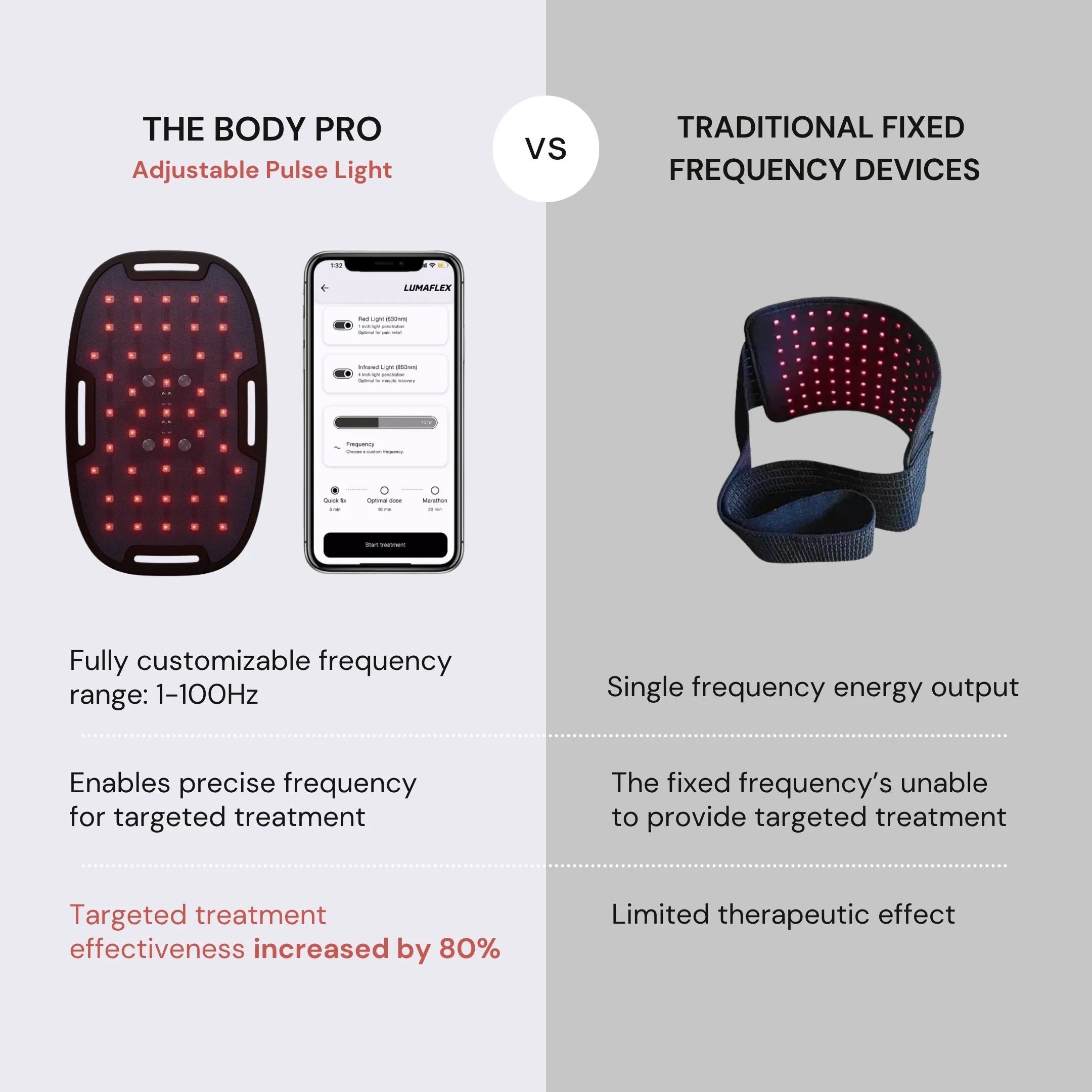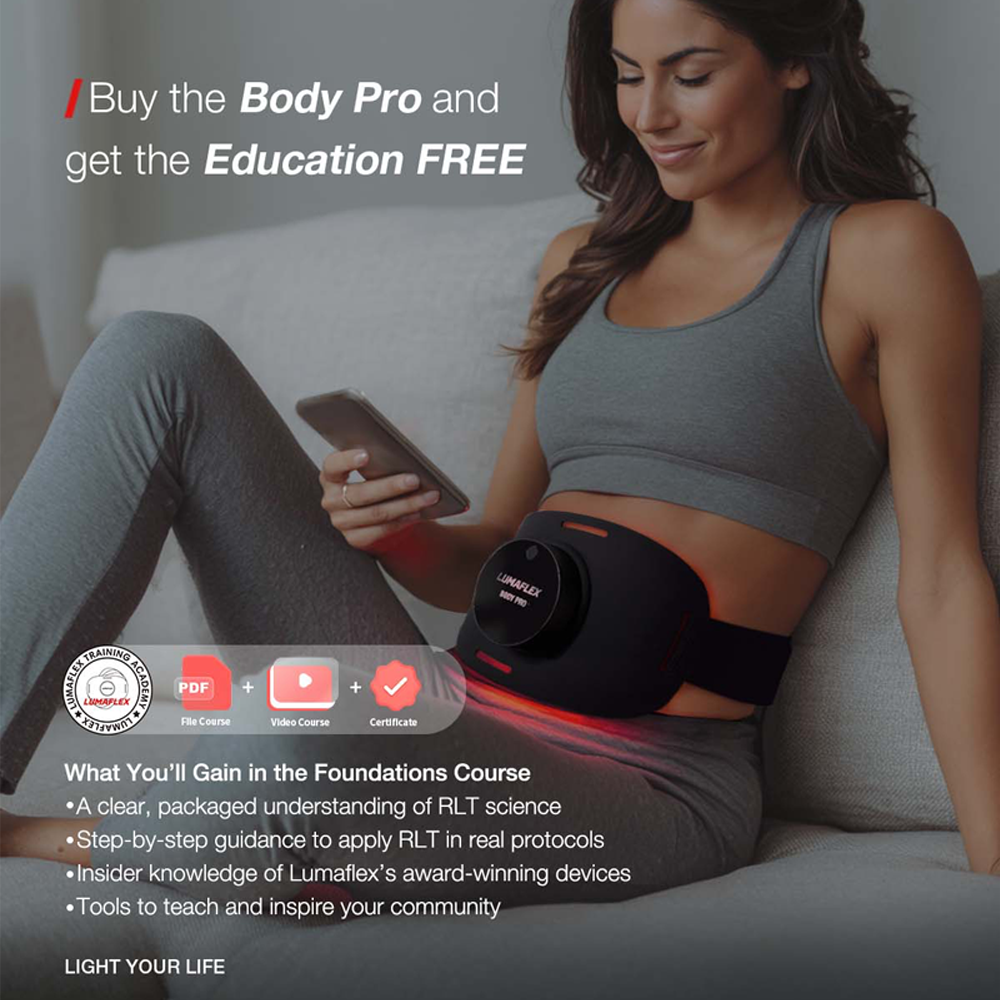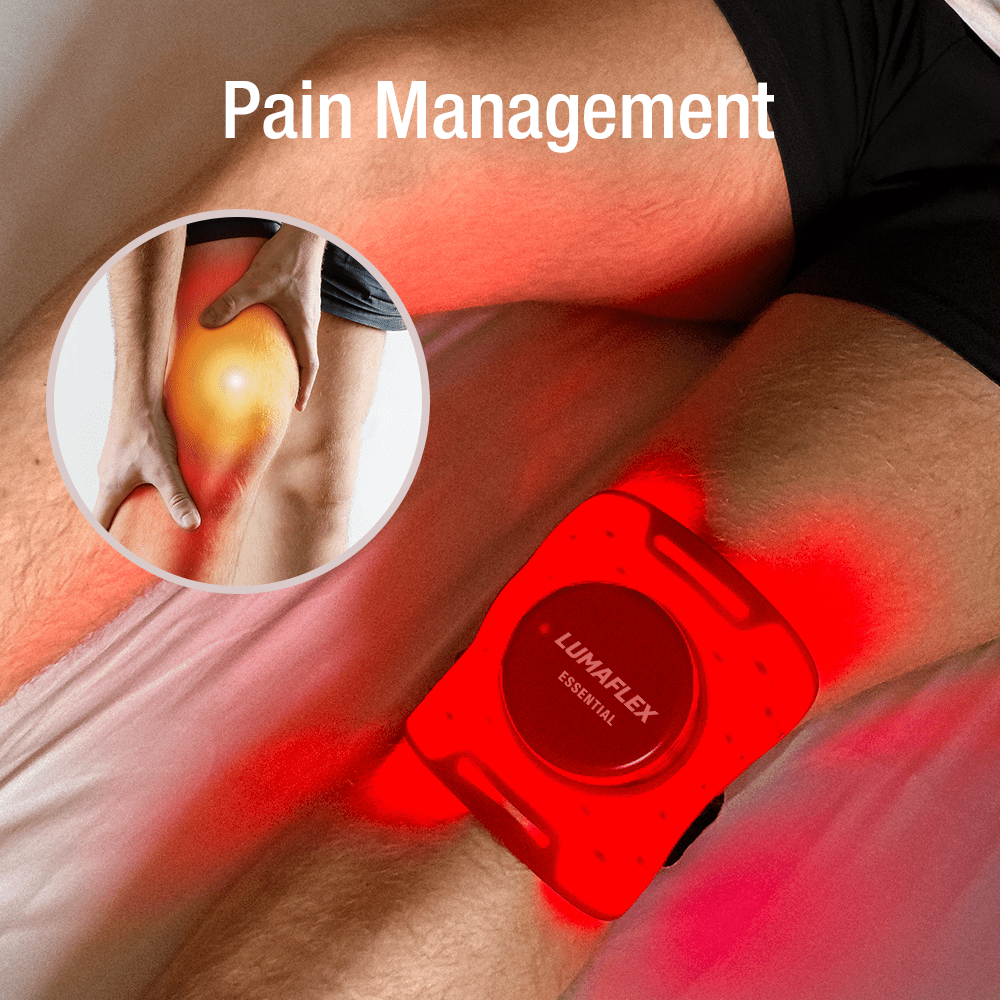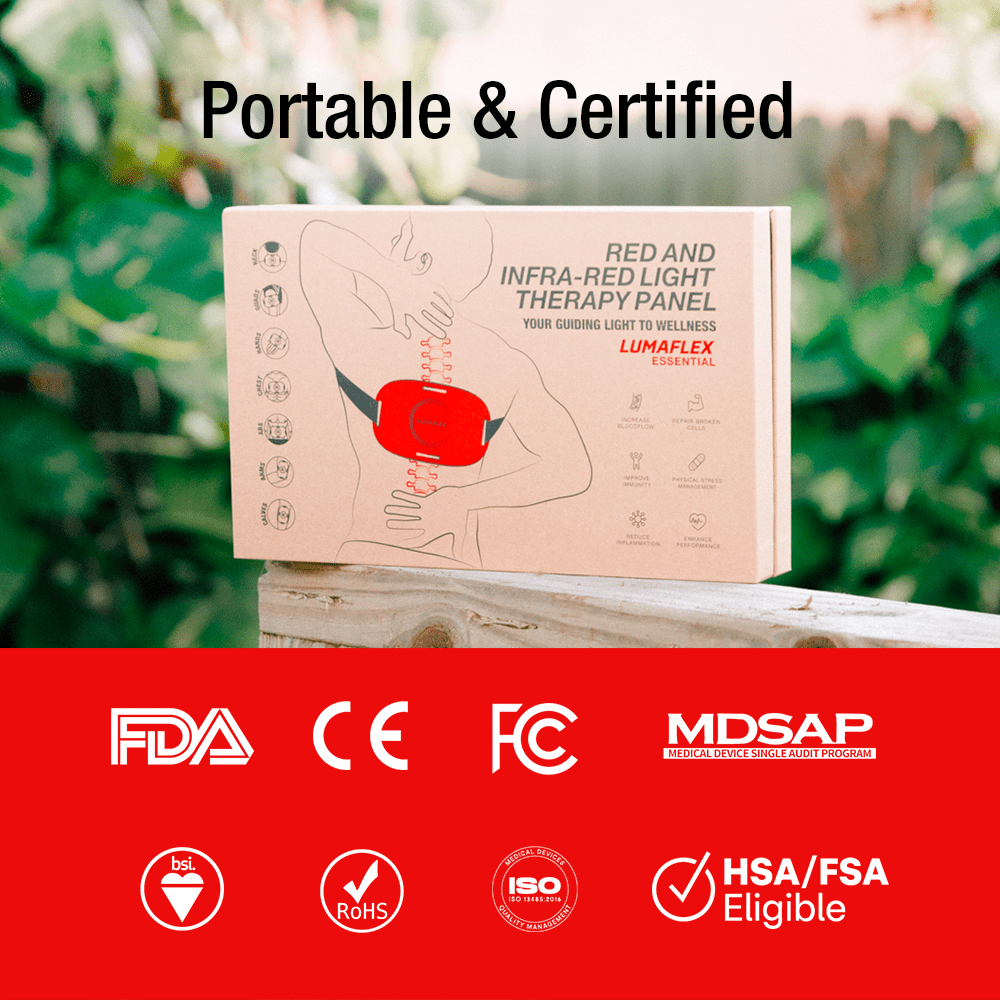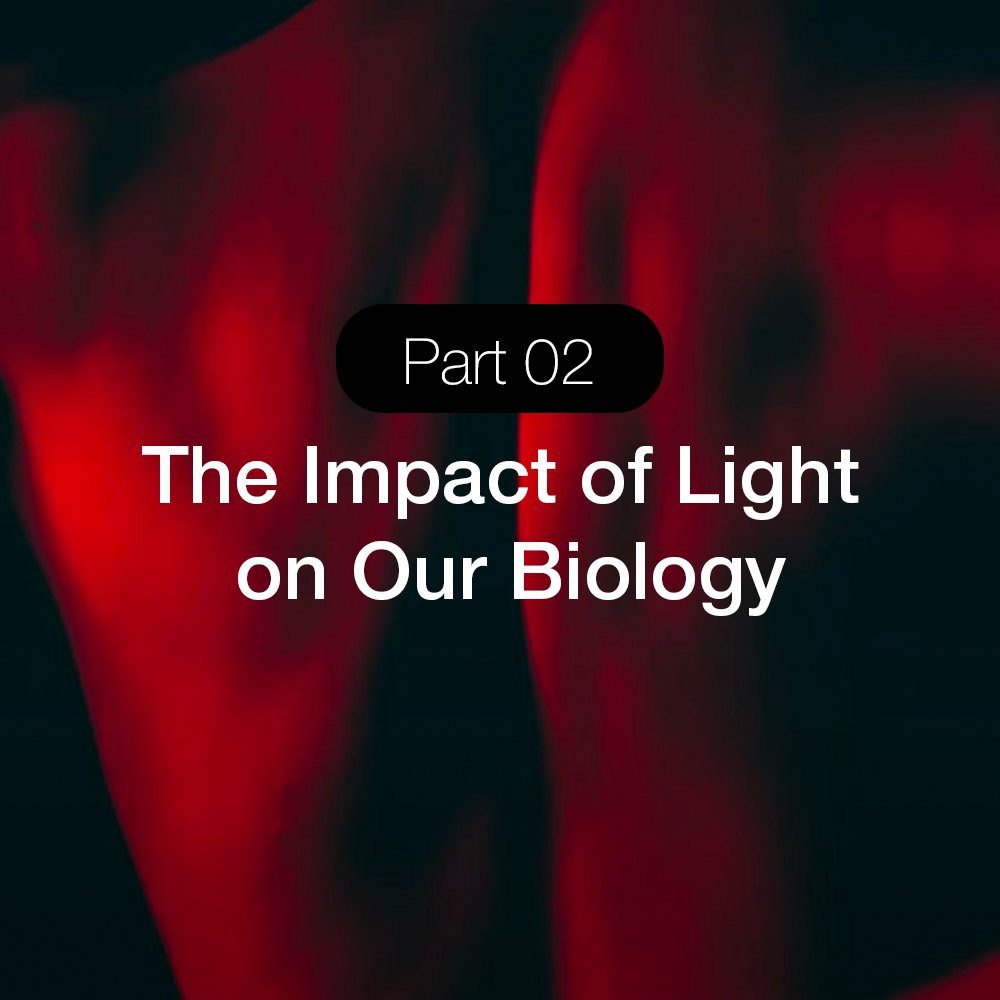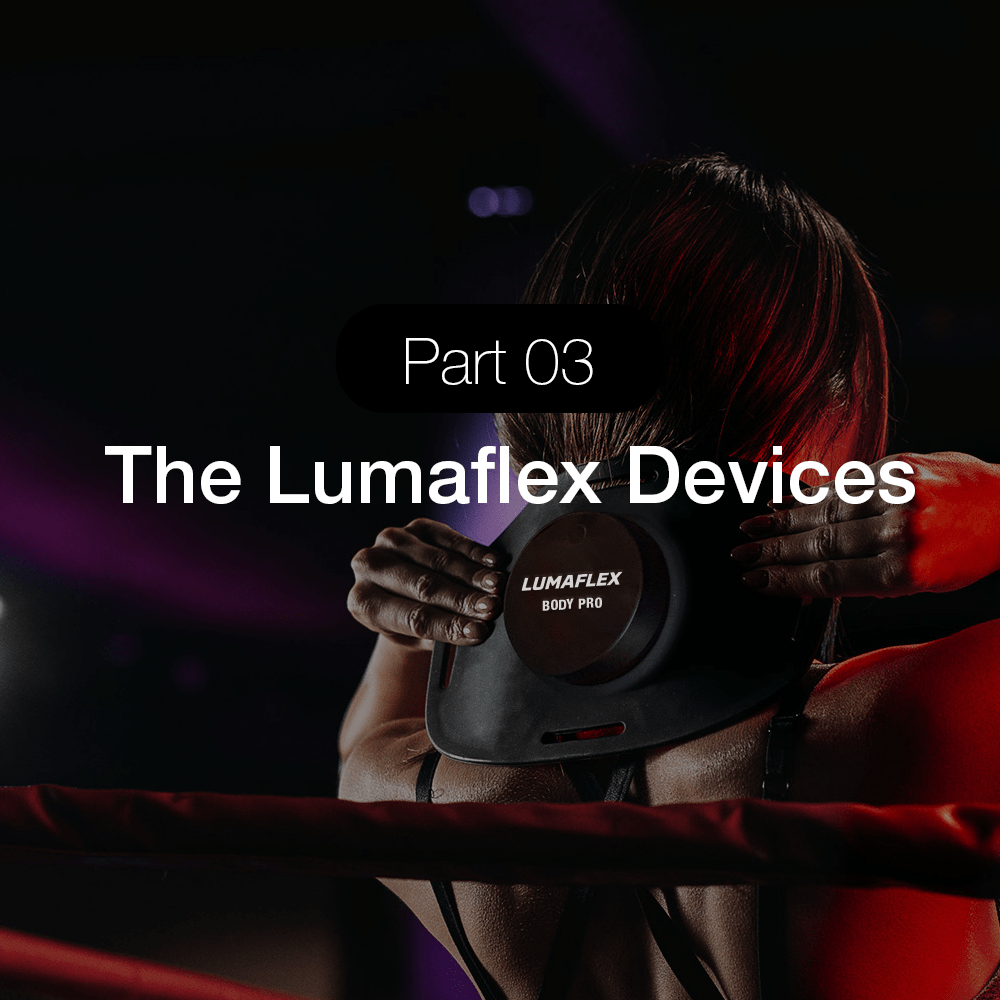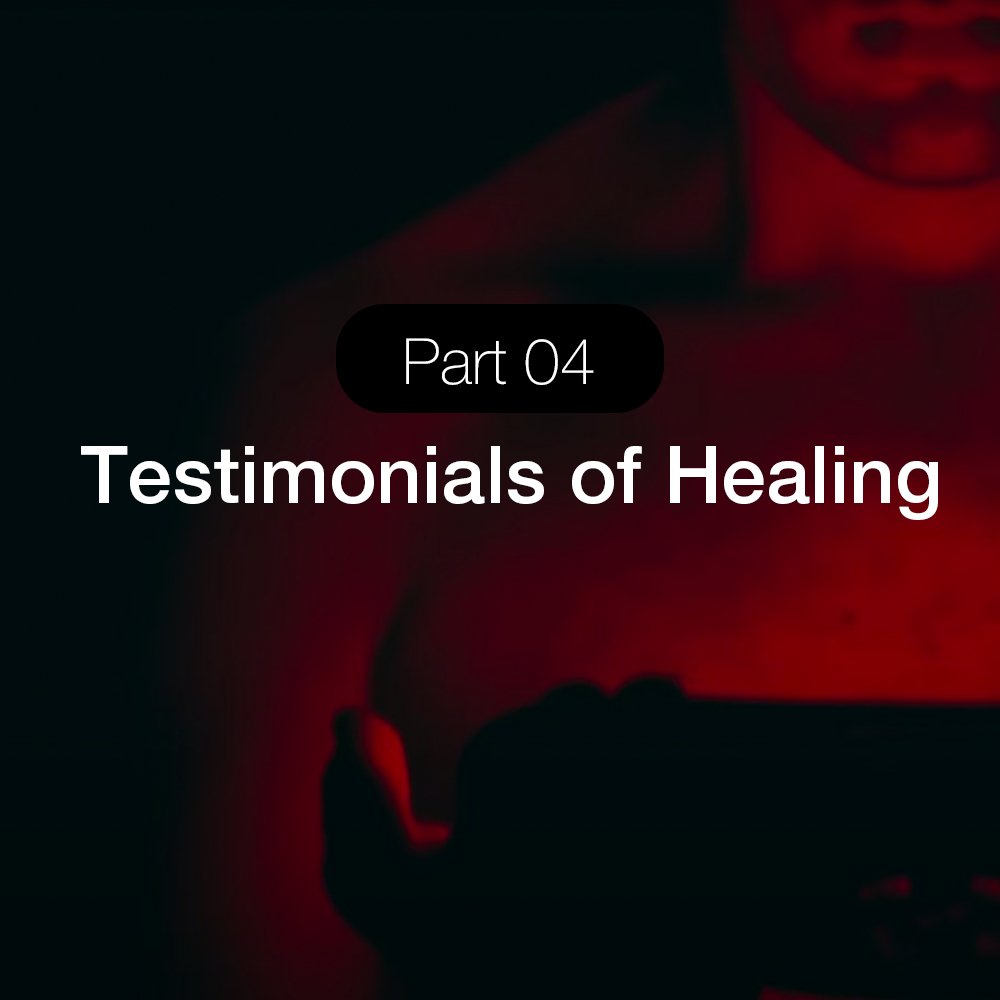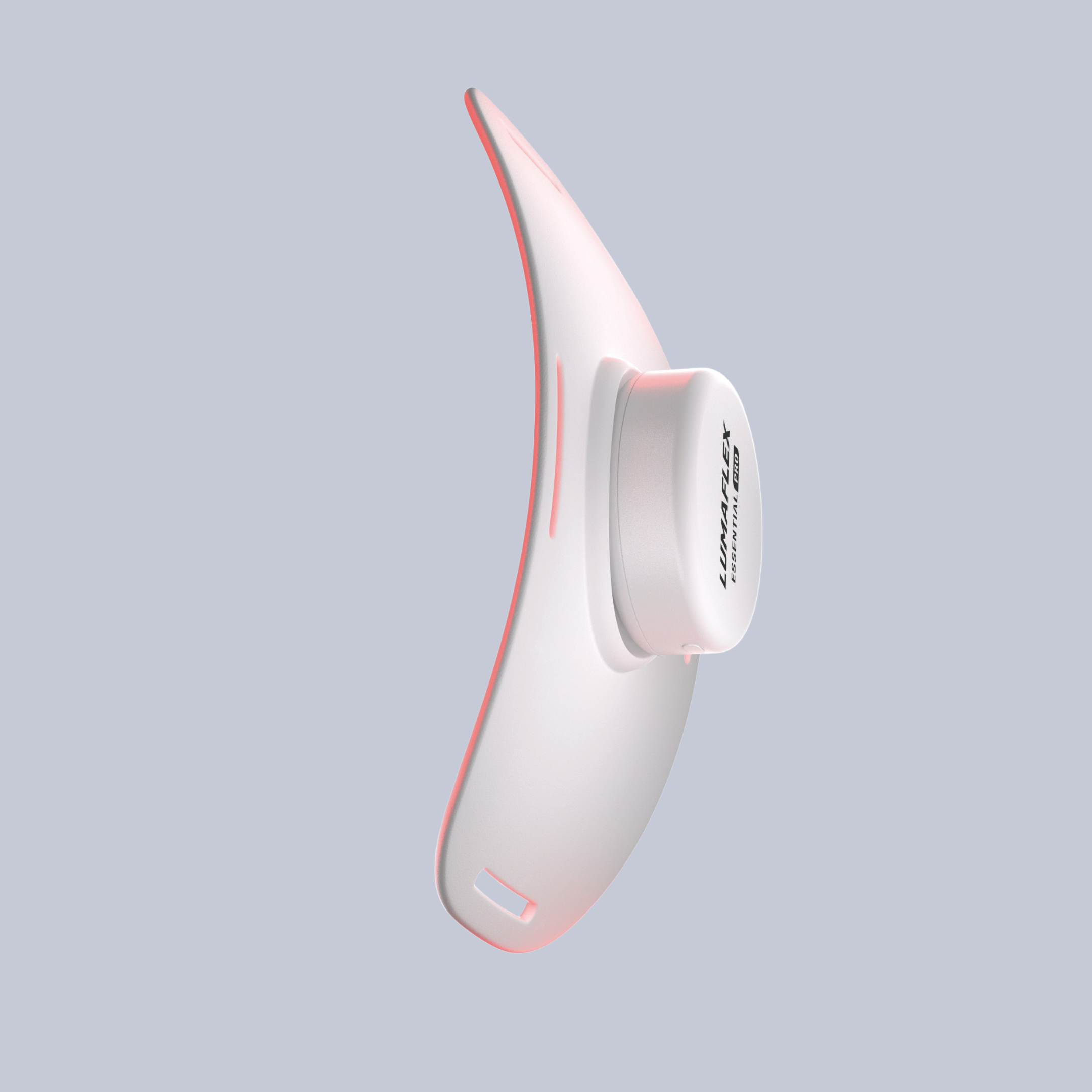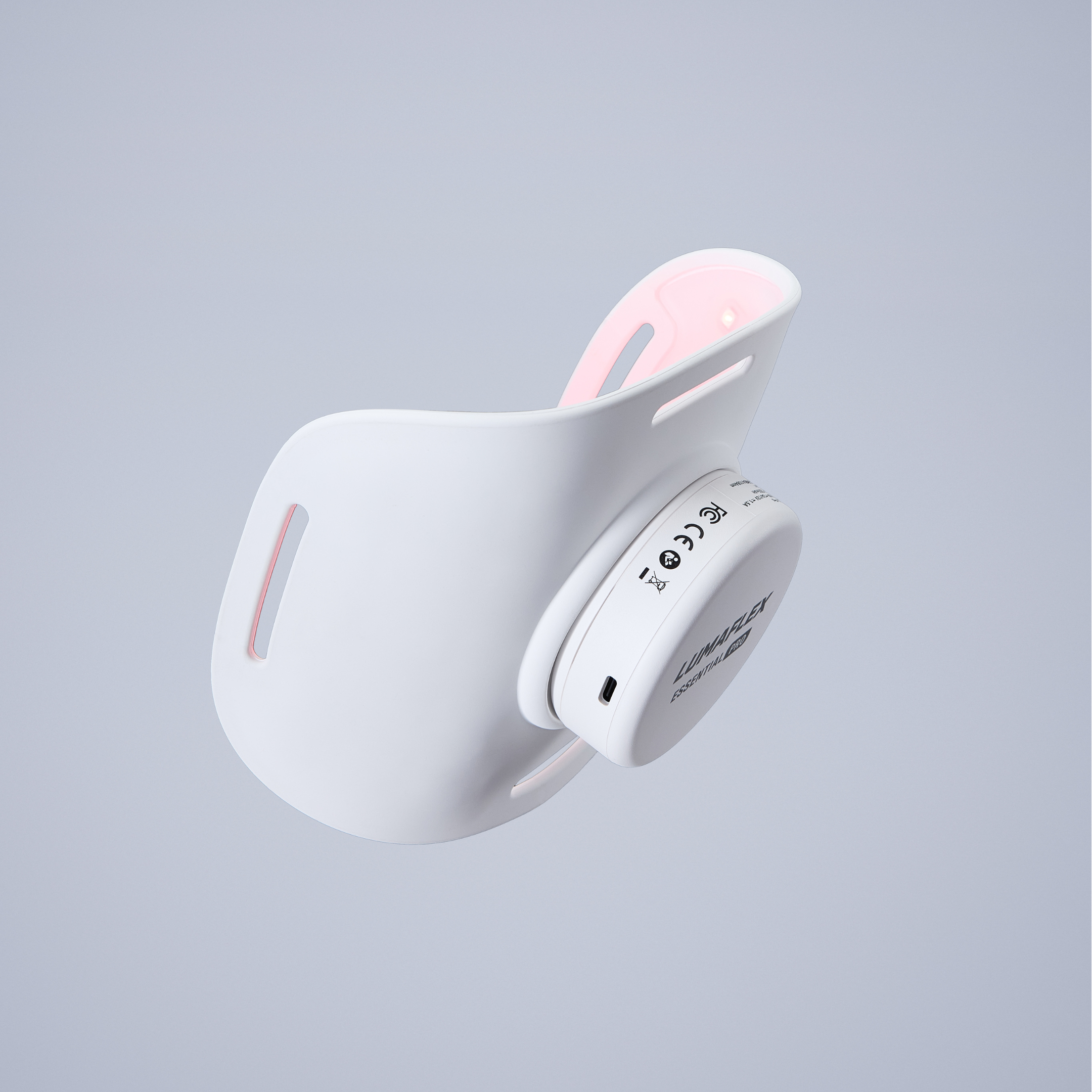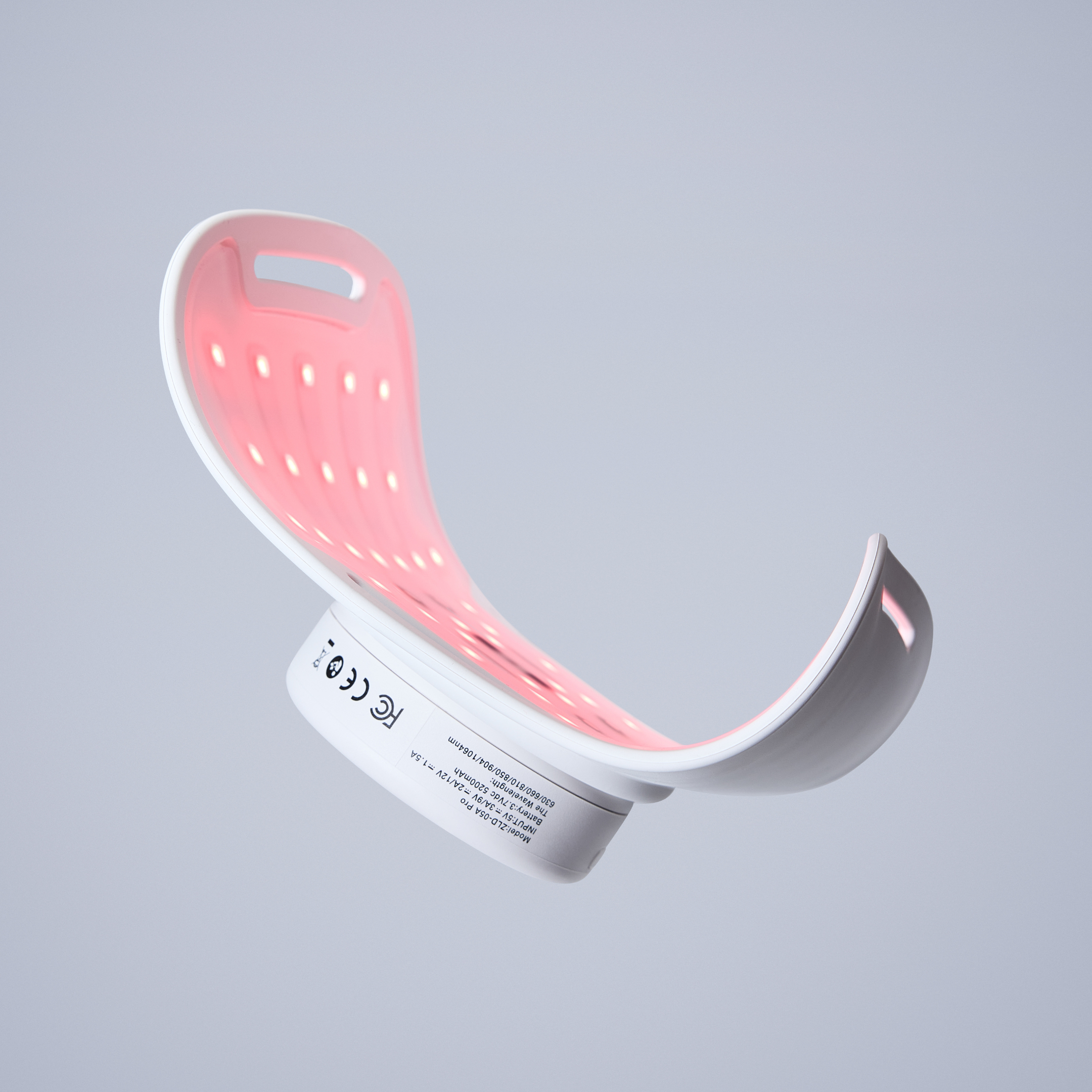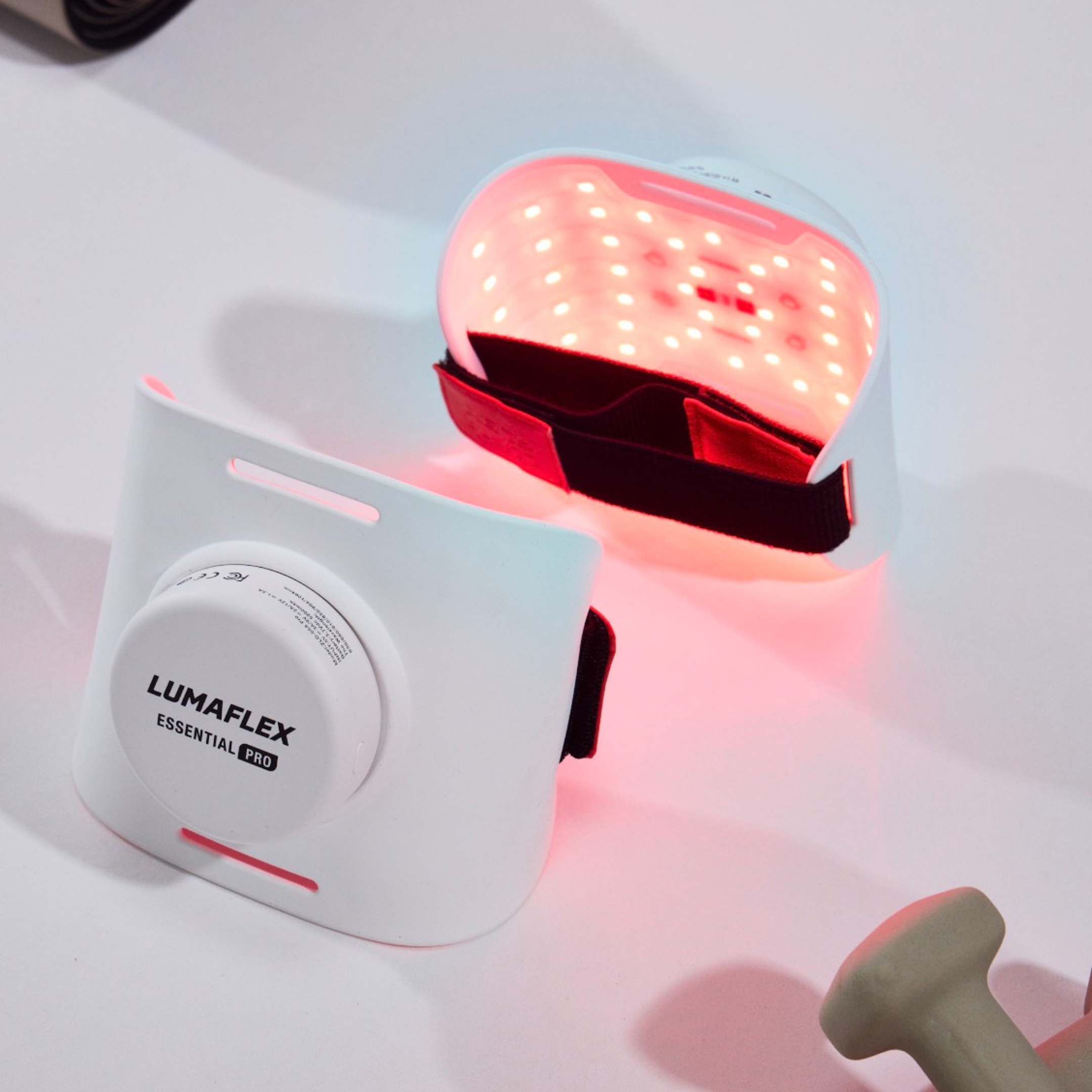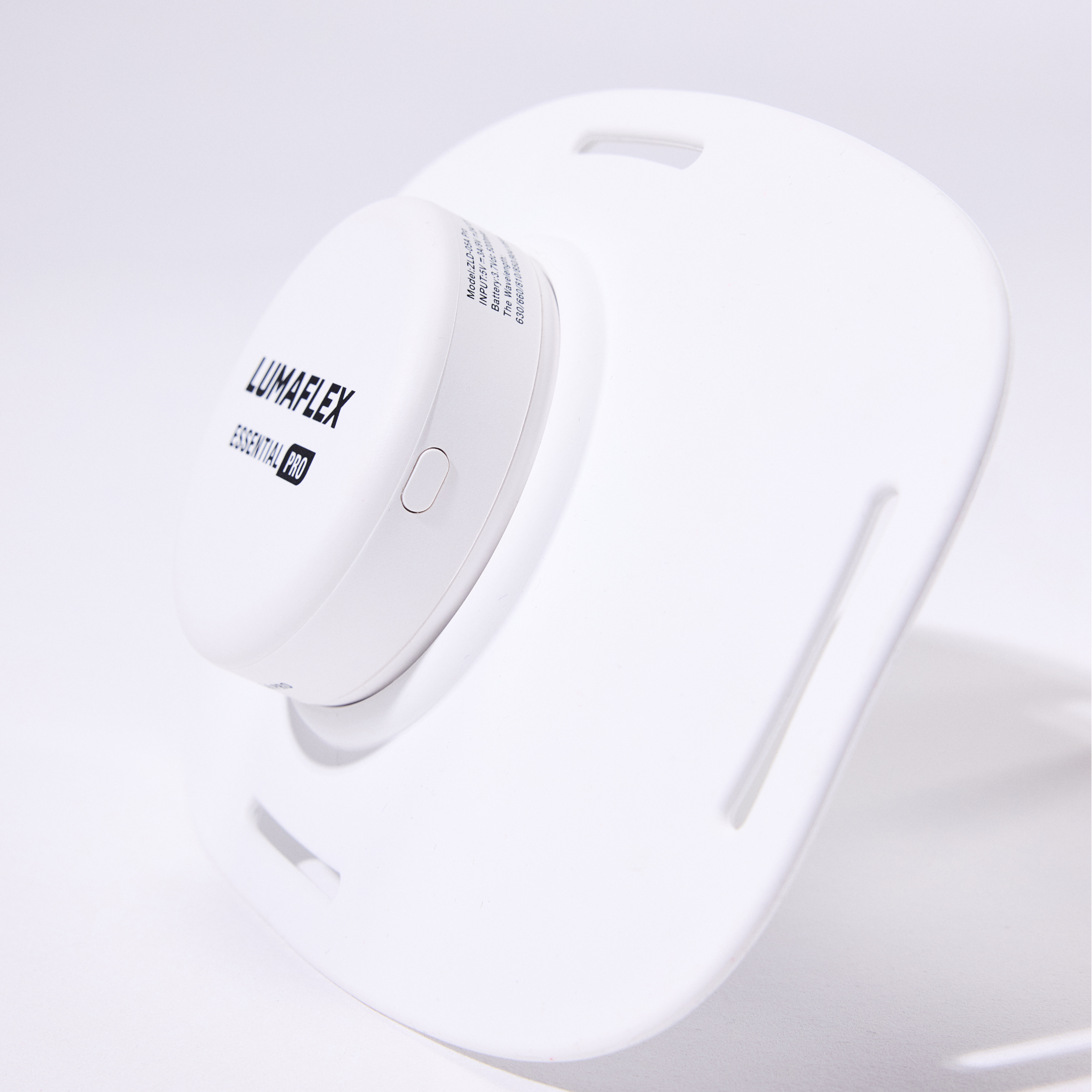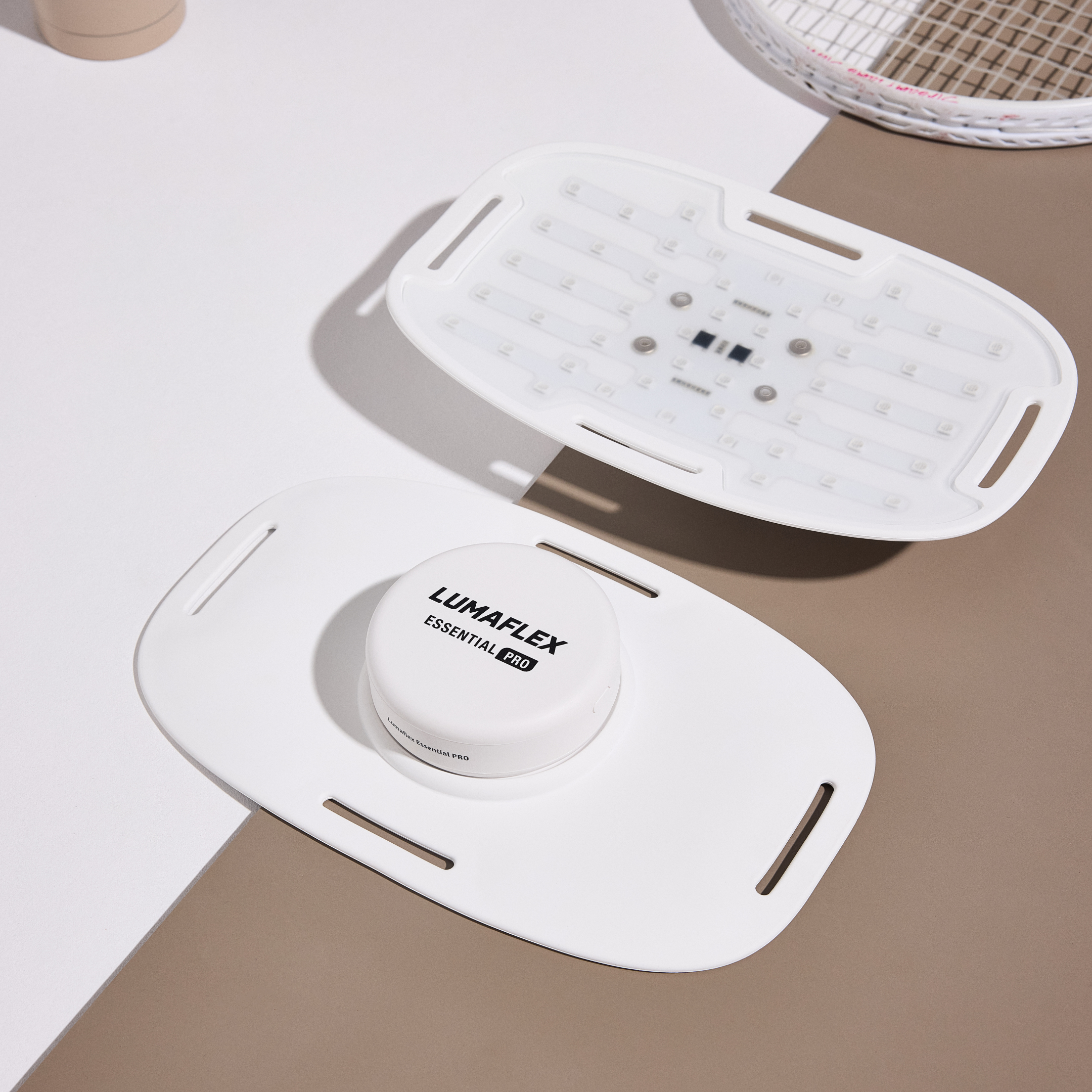Can Red Light Therapy During Pregnancy Help You Sleep Better?

Why Sleep Matters During Pregnancy
Getting restful sleep during pregnancy is more challenging than many expect. As the body undergoes dramatic hormonal shifts and physical changes, many pregnant individuals struggle with insomnia, disrupted sleep cycles, and overall poor sleep quality. Conditions like pregnancy insomnia and restless leg syndrome often appear in the second and third trimesters, leaving expecting mothers feeling fatigued and stressed. This has sparked interest in solutions like red light therapy during pregnancy as a potential way to support better rest.
With concerns about medication safety, many turn to natural pregnancy treatments to support better rest. This has led to growing interest in non-invasive therapies for pregnant women, especially those that help regulate the body’s circadian rhythm without chemical intervention.
One increasingly popular solution is red light therapy (RLT). Known for its benefits in hormone balance, melatonin support, and sleep quality, RLT is being explored as a gentle, drug-free approach to managing sleep difficulties during pregnancy. But how does it work, and is it safe for expectant mothers? Let’s dive deeper.
Table of content
- 1. Why Sleep Matters During Pregnancy
- 2. What Is Red Light Therapy and How Does It Work?
- 3. Red Light Therapy During Pregnancy: Is It Safe?
- 4. How Pregnancy Disrupts Sleep: A Biological Overview
- 5. Can Red Light Therapy Improve Sleep Quality During Pregnancy?
- 6. Best Practices for Using Red Light Therapy During Pregnancy
- 7. Benefits Beyond Sleep: Why Expecting Moms Use RLT
- 8. Natural Alternatives to Red Light Therapy for Better Sleep
- 9. FAQs: Red Light Therapy During Pregnancy
- 10. A Light-Based Approach to Restful Nights
What Is Red Light Therapy and How Does It Work?
Red light therapy (RLT), also known as low-level light therapy (LLLT), is a non-invasive treatment that uses specific wavelengths of red and near-infrared light to stimulate cellular repair and regeneration. Unlike UV rays or blue light, which can disrupt circadian rhythms or damage the skin, RLT works at a much deeper, therapeutic level, without generating heat or causing harm.
Understanding Red vs. Near-Infrared Light
Red light typically operates in the 620–750 nm range and primarily affects surface-level tissues, making it ideal for improving skin health and reducing inflammation. Near-infrared light (750–1100 nm), on the other hand, penetrates deeper into the body’s tissues, influencing mitochondrial function and promoting systemic healing.
When cells absorb these wavelengths, the mitochondria, our cellular energy producers are stimulated to generate more ATP (adenosine triphosphate), enhancing the body’s ability to repair and restore balance.
Common Benefits of Red Light Therapy Include:
- Improving sleep quality by supporting melatonin production
- Reducing pregnancy-related pain and inflammation
- Supporting hormone balance naturally
- Enhancing mood and reducing stress
- Accelerating skin healing and reducing breakouts
As a non-pharmacological therapy, RLT is especially appealing to pregnant women seeking safer alternatives for symptom relief and natural sleep aids.
Red Light Therapy During Pregnancy: Is It Safe?
Safety is the top priority for any expectant mother exploring natural pregnancy treatments like red light therapy during pregnancy. While research on RLT in pregnant populations is still limited, existing data offers promising insights, with a few important caveats.
Current studies on low-level light therapy suggest that it is generally safe for topical use and does not emit ionizing radiation or harmful heat. According to dermatologists and wellness researchers, red and near-infrared light can help reduce inflammation, support hormone balance, and even improve sleep quality, all without systemic side effects. However, most of this research is based on the general population, not pregnant individuals specifically.
Expert Caution and Practical Considerations
Many OB-GYNs and healthcare professionals agree that RLT may be safe if used properly, but advise against targeting the abdominal area due to a lack of long-term fetal safety data. The safety of wavelength (ideally 630–850 nm), exposure time (usually 10–20 minutes), and frequency of sessions are also important variables.
Key safety guidelines include:
- Avoid abdominal or lower back exposure
- Use FDA-cleared, low-heat light therapy devices
- Limit sessions to 10–20 minutes unless advised otherwise
- Consult your prenatal care provider before starting any RLT routine
As with any non-invasive therapy for pregnant women, medical consultation is essential before beginning RLT to ensure it aligns with your unique health needs and trimester.
How Pregnancy Disrupts Sleep: A Biological Overview
Sleep disturbances during pregnancy are extremely common, affecting as many as 78% of expectant mothers, particularly in the second and third trimesters. A mix of hormonal, physical, and emotional changes contribute to disrupted rest and pregnancy insomnia, often leaving mothers-to-be exhausted and searching for natural remedies.
Hormonal Shifts and Sleep Cycles
Hormonal fluctuations, particularly in progesterone and cortisol, can interfere with the body’s natural circadian rhythm and melatonin production. Progesterone has a sedative effect but can also lead to fragmented sleep, while elevated cortisol levels, associated with stress, can increase nighttime wakefulness.
Physical and Emotional Challenges
Physically, back pain, frequent urination, and restless leg syndrome are leading causes of discomfort at night. The growing uterus and increased body weight can make it difficult to find a comfortable sleeping position. Emotionally, pregnancy often brings heightened anxiety, anticipation, and mood swings that further disrupt rest.
Why Sleep Matters for You and Your Baby
Poor sleep quality during pregnancy has been linked to increased risks of gestational diabetes, high blood pressure, and even preterm birth. It also affects immune function, emotional stability, and labor readiness.
Understanding these biological challenges highlights the need for safe, non-pharmacological sleep solutions, like red light therapy to support expectant mothers through a healthier pregnancy journey.
Can Red Light Therapy Improve Sleep Quality During Pregnancy?
One of the most promising benefits of red light therapy is during pregnancy is its potential to support better sleep quality, a concern for many expecting mothers. While sleep medications are typically avoided during pregnancy, natural sleep aids like red light therapy (RLT) offer a non-invasive alternative that targets the body’s internal rhythms and hormone balance.
Red Light and Melatonin Production
Research shows that red and near-infrared light therapy can support the body’s natural production of melatonin, the hormone responsible for regulating sleep-wake cycles. Unlike bright white or blue light, which can suppress melatonin and disrupt circadian rhythms, red light has been shown to have a neutral or even positive effect on melatonin release, especially when used before bedtime.
Regulating Circadian Rhythms Safely
By helping to align the body’s internal clock, RLT may improve sleep latency (how quickly you fall asleep), sleep depth, and total sleep time, without the risks of pharmacological intervention. For pregnant women experiencing pregnancy insomnia or frequent awakenings, consistent red light exposure in the evening may signal the body that it’s time to wind down.
RLT vs. Blue Light at Night
Modern life bombards us with artificial blue light from phones, tablets, and TVs, all of which delay melatonin production. RLT, on the other hand, can be integrated into evening routines to create a calming, sleep-promoting environment.
| Light Type | Impact on Sleep | Common Sources | Pregnancy-Safe? |
|---|---|---|---|
| Red Light | Supports melatonin, regulates circadian rhythm | RLT devices, red LED night lights | ✔ Yes (with guidance) |
| Near-Infrared | Penetrates deeper tissue, may reduce inflammation | Advanced RLT devices | ✔ Use with caution |
| Blue Light | Suppresses melatonin, disrupts sleep cycle | Phones, tablets, LED screens | ✘ Avoid before bedtime |
| Natural Sunlight | Helps maintain sleep-wake rhythm (morning exposure) | Outdoors, windows | ✔ Beneficial in moderation |
Real-World Applications for Pregnant Women
Many use pregnancy-safe light therapy devices, like red light face masks, panels, or portable lamps for 10–20 minutes in the evening. Combining RLT with other sleep hygiene practices, such as limiting screen time and creating a relaxing bedtime ritual, may provide noticeable improvements in sleep quality during pregnancy.
Best Practices for Using Red Light Therapy During Pregnancy
If you’re considering red light therapy for your pregnancy to improve sleep or relieve discomfort, always follow safe and effective guidelines. Understanding proper usage helps maximize benefits while minimizing any potential risks.
Recommended Session Duration and Frequency
Most experts suggest starting with short sessions of 10 to 20 minutes, once or twice daily. This duration is generally enough to stimulate melatonin production and promote healing without overexposure. Daily use, especially in the evening, can help regulate your circadian rhythm and improve sleep quality over time.
Safe Body Areas to Target
Avoid applying red light directly over the abdomen or lower back during pregnancy, as there isn’t sufficient research on how this might affect the fetus. Instead, focus on safer areas like the face, neck, shoulders, and limbs, where red and near-infrared light can support skin health, pain relief, and relaxation.



Device Types: Masks, Panels, and Handhelds
There are various pregnancy-safe light therapy devices available, including red light masks (ideal for skin and mood), panels (for broader exposure), and handheld units (portable and versatile). Choose devices that emit wavelengths between 630–850 nm, like Lumaflex which are proven to be effective and safe.
Choosing a Pregnancy-Safe RLT Device
Look for FDA-cleared devices with low heat output to avoid any skin irritation or overheating. Devices designed specifically for wellness purposes tend to have built-in timers and safety features that are especially important during pregnancy.
When to Use RLT for Sleep
Using red light therapy about 30 minutes before bedtime can help prepare your body for restful sleep by supporting natural melatonin production. Pair RLT with a calming pre-bedtime routine, such as dimming lights and avoiding screens—to enhance the effects.
Following these best practices ensures that red light therapy is a safe and effective tool for improving sleep and wellness during pregnancy.
Benefits Beyond Sleep: Why Expecting Moms Use RLT
While red light therapy for pregnancy is often celebrated for enhancing sleep quality, many expecting mothers discover additional benefits that improve overall wellbeing. One of the most popular uses is for skin improvement, RLT can help reduce acne flare-ups common during pregnancy and support skin elasticity, potentially minimizing the appearance of stretch marks.
Additionally, red light therapy offers effective pain relief for joints and back, addressing common pregnancy discomforts without the need for medication. By promoting circulation and reducing inflammation, it helps ease muscle tension and soreness.
RLT also contributes to mood enhancement and stress relief, which are vital during pregnancy when emotional fluctuations are frequent. The gentle light exposure can help boost energy levels and support healthy blood flow, helping expecting moms feel more balanced and revitalized.
These combined benefits make red light therapy a versatile, non-invasive therapy for pregnant women looking for natural ways to support their changing bodies throughout pregnancy.
Natural Alternatives to Red Light Therapy for Better Sleep
For pregnant women seeking additional ways to improve sleep quality during pregnancy, several natural strategies complement or serve as alternatives to red light therapy.
Relaxation Techniques
Practicing prenatal yoga and meditation can help calm the mind and reduce pregnancy-related anxiety, creating a more peaceful transition to sleep.
Environmental and Nutritional Support
Adjusting your sleep environment and diet also plays a crucial role in sleep hygiene.
Try these natural methods to promote better rest:
- Use blackout curtains to block disruptive light
- Incorporate white noise machines or soft calming sounds
- Consider gentle nutritional aids like magnesium supplements, warm milk, or herbal teas (such as chamomile or peppermint), but always consult your healthcare provider first
Establishing consistent bedtime rituals, like dimming lights, avoiding screens, and maintaining a regular sleep schedule can further enhance sleep patterns throughout pregnancy.
FAQs: Red Light Therapy During Pregnancy
Q1: Is red light therapy safe during all trimesters of pregnancy?
While research is limited, most experts agree that red light therapy is generally safe during pregnancy when used correctly. However, pregnant women should avoid exposing the abdomen and always consult their healthcare provider before starting RLT at any trimester.
Q2: Can red light therapy help with insomnia during pregnancy?
Yes, red light therapy may improve sleep quality by supporting natural melatonin production and regulating the circadian rhythm. Many pregnant women find it helpful as a gentle, non-pharmacological sleep aid.
Q3: Is it safe to use a red light therapy face mask while pregnant?
Using a red light therapy face mask on areas away from the abdomen is considered safe for pregnancy. Masks can help with skin issues like acne and support relaxation without harmful effects.
Q4: How soon before bed should I use red light therapy for best results?
For optimal benefits, use red light therapy about 30 minutes before bedtime. This timing helps stimulate melatonin and prepare your body for restful sleep.
Q5: Can red light therapy affect my baby?
There is no evidence that properly used red light therapy affects the baby, especially when avoiding direct abdominal exposure. Still, always discuss with your prenatal care provider to ensure safety.
A Light-Based Approach to Restful Nights
Red light therapy during pregnancy offers a promising, natural way to improve sleep quality, support hormone balance, and alleviate common discomforts—without the risks of medication. While the science is still evolving, early research and expert opinions suggest RLT can be a safe, gentle aid for many expecting mothers struggling with pregnancy insomnia and disrupted sleep.
However, personalized medical advice is essential before starting any new treatment during pregnancy. Consulting your healthcare provider ensures the therapy aligns with your individual needs and health status.
Exploring natural, research-backed therapies like red light therapy can empower pregnant women to enjoy more restful nights and healthier pregnancies







